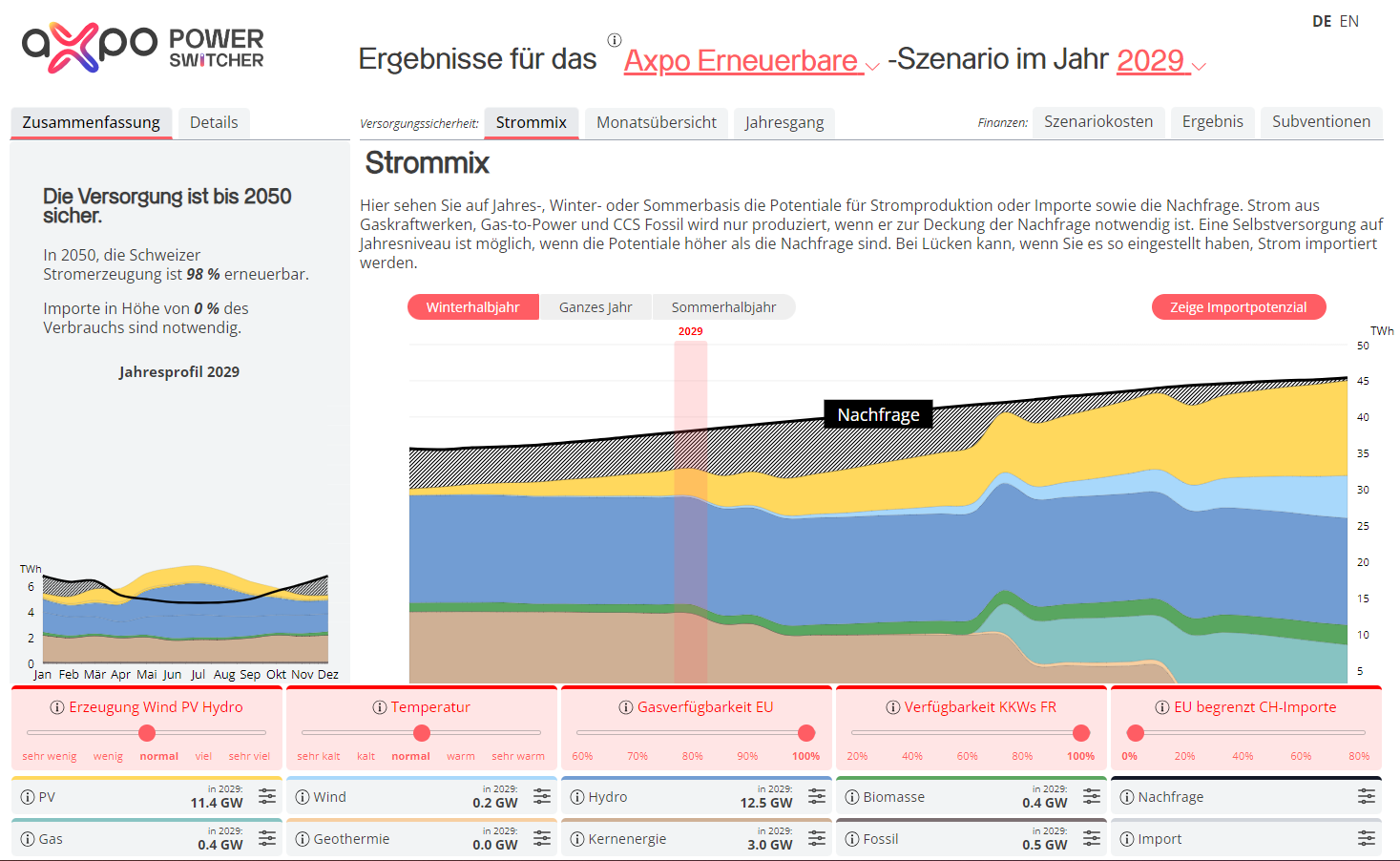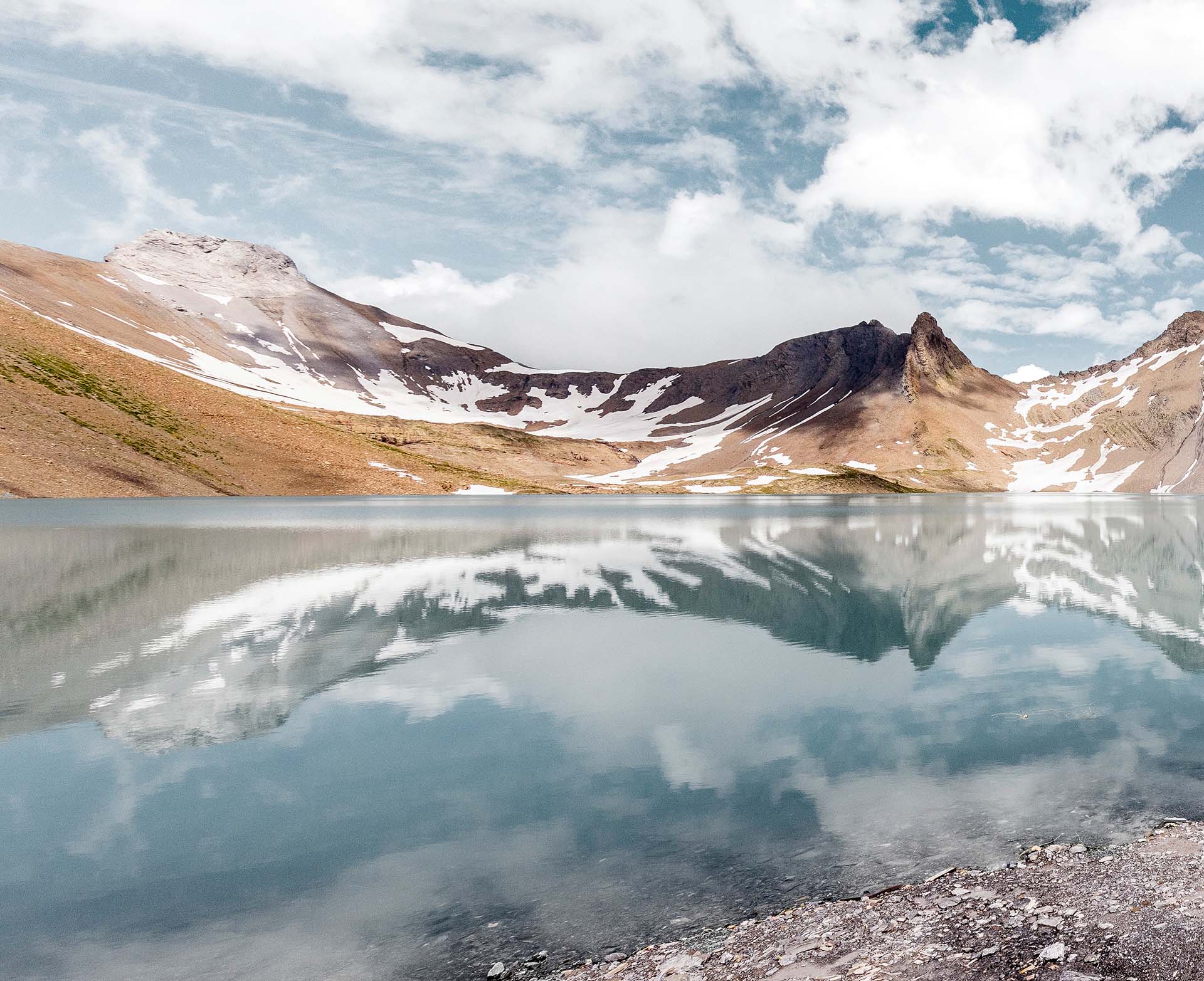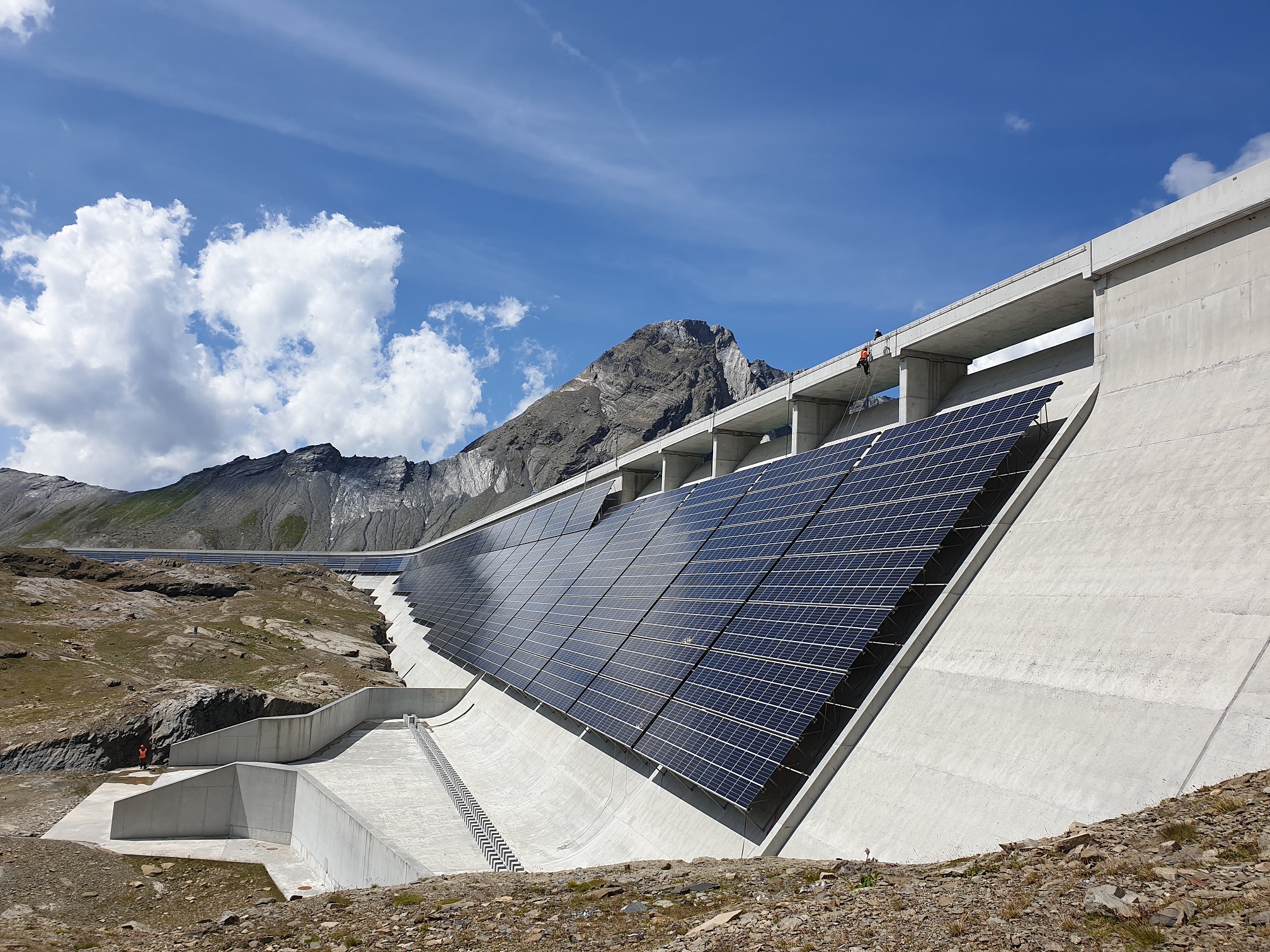

AlpinSolar Overview of the project
The project at a glance
Together with IWB, Axpo has realised one of the largest alpine solar plant in Switzerland at 2500 metres above sea level. The plant has been fully operational since the end of August 2022. The AlpinSolar project produces around 3 million kilowatt hours of electricity per year.
Impressions start of construction

We use the sun where it is the closest
The Muttsee dam is extremely well suited for a photovoltaic plant thanks to its existing infrastructure, its orientation and its altitude:
- Owing to the alpine location at 2500 m.a.s.l., solar power is particularly effective and generates lots of power in the winter thanks to snow reflection and a lower incidence of fog.
- The Muttsee dam faces the south and, as a result, has sun all day.
- The Muttsee dam has an optimal angle – snow slides off the surface on its own.
- Only existing infrastructure will be used so that no additional open space is needed for construction.
- Some of the infrastructure (e.g. 16-kV grid connection) is already in place.
Local, renewable power for Denner
Denner, the largest discounter in Switzerland, has contracted the alpine solar power generated as of commissioning for a term of 20 years. In doing so, Denner continues to rigorously pursue its ambitious sustainability objectives and will supply its stores and offices with 100% renewable, local power.
Alpine solar power in winter
Switzerland produces significantly less electricity in winter than it consumes. Therefore, there is a shortage of electricity during winter, which must be imported. This situation is likely to worsen in the coming years as nuclear and coal power plants are decommissioned both domestically and abroad.
This is why it is important to find solutions to generate additional electricity from renewable sources during the winter months. The large alpine solar plant in the Glarus Alps contributes to this: it produces more electricity in the winter months than a comparable solar plant in the Swiss plateau.
Solar plants in the Midlands are often under the fog line during the winter months – there is much less fog and more sun at high altitudes. In addition, PV plants like the cold. The efficiency of solar modules is higher at low temperatures than when it is hot. And sunlight is reflected by the snow cover and results in higher solar power production. This is called the Albedo effect. Furthermore, the angle of the dam is optimal for solar power production in winter.
Data for research
With the full commissioning of AlpinSolar, a scientific research project by the Snow and Avalanche Research Institute (SLF) and EPFL also begins. Over the course of four years, experience and data will be collected from the plant, which can serve as a foundation for future plants in alpine areas. This includes testing different types of panels, comparing various panel tilt angles on the dam wall, and collecting data on wind and snow loads as part of the research.
Download Pictures and Factsheet
- Plant in winter 2023 (4 pictures, 1 video) Send email Download
- Media release (01.09.2022, PDF) View Send email Download
- Start of construction (7 images, 1 video) Send email Download
- Construction (8 images) Send email Download
- Factsheet (PDF) View Send email Download
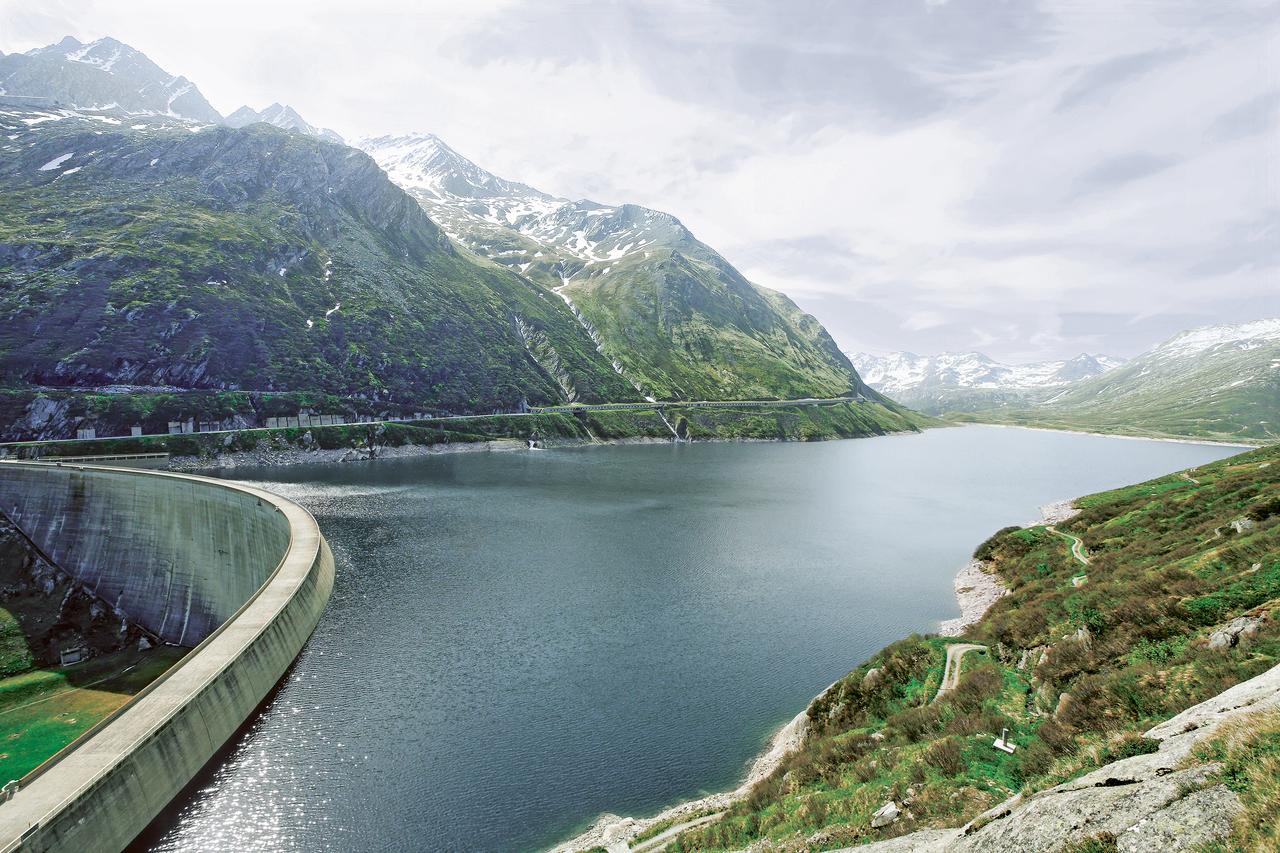

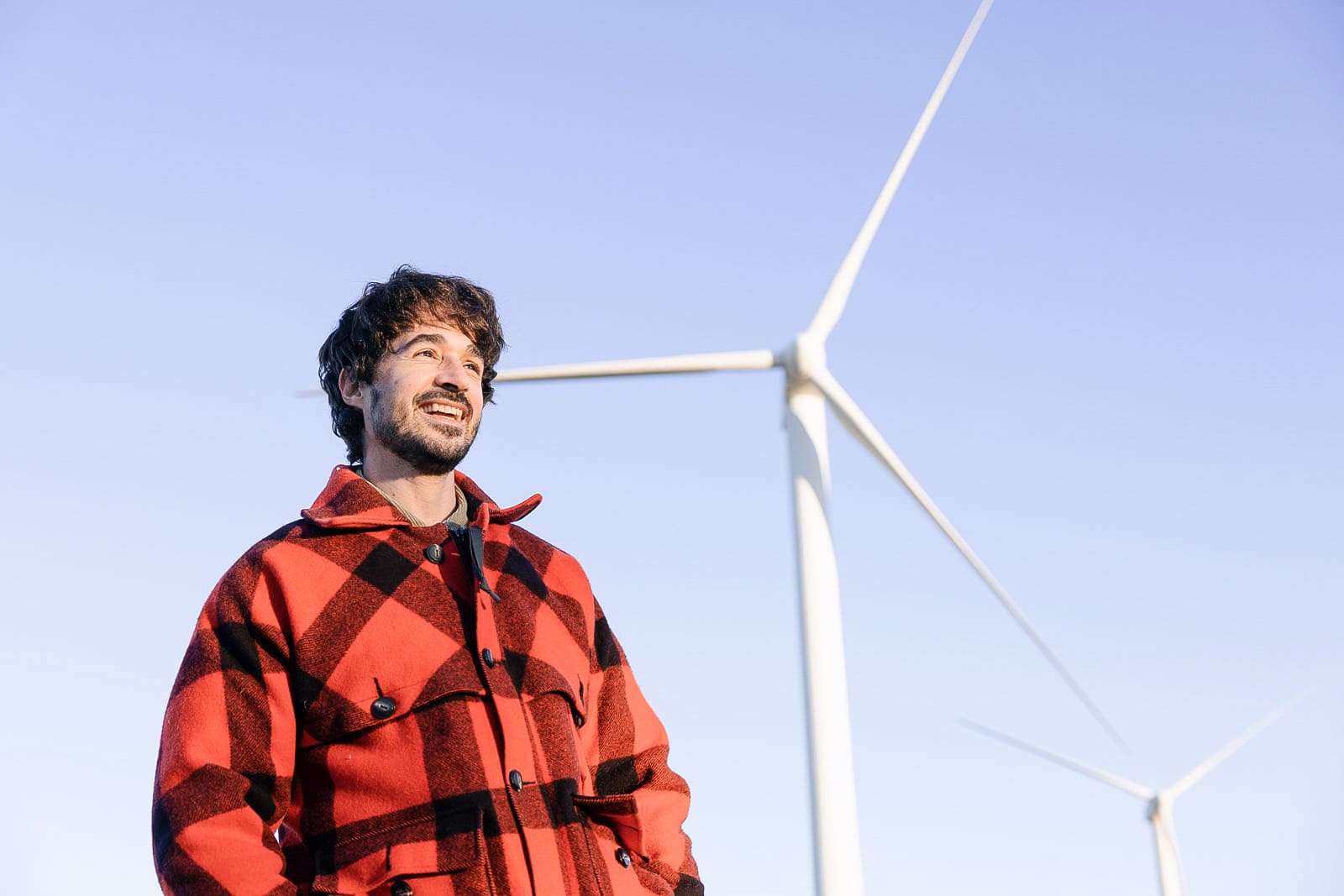
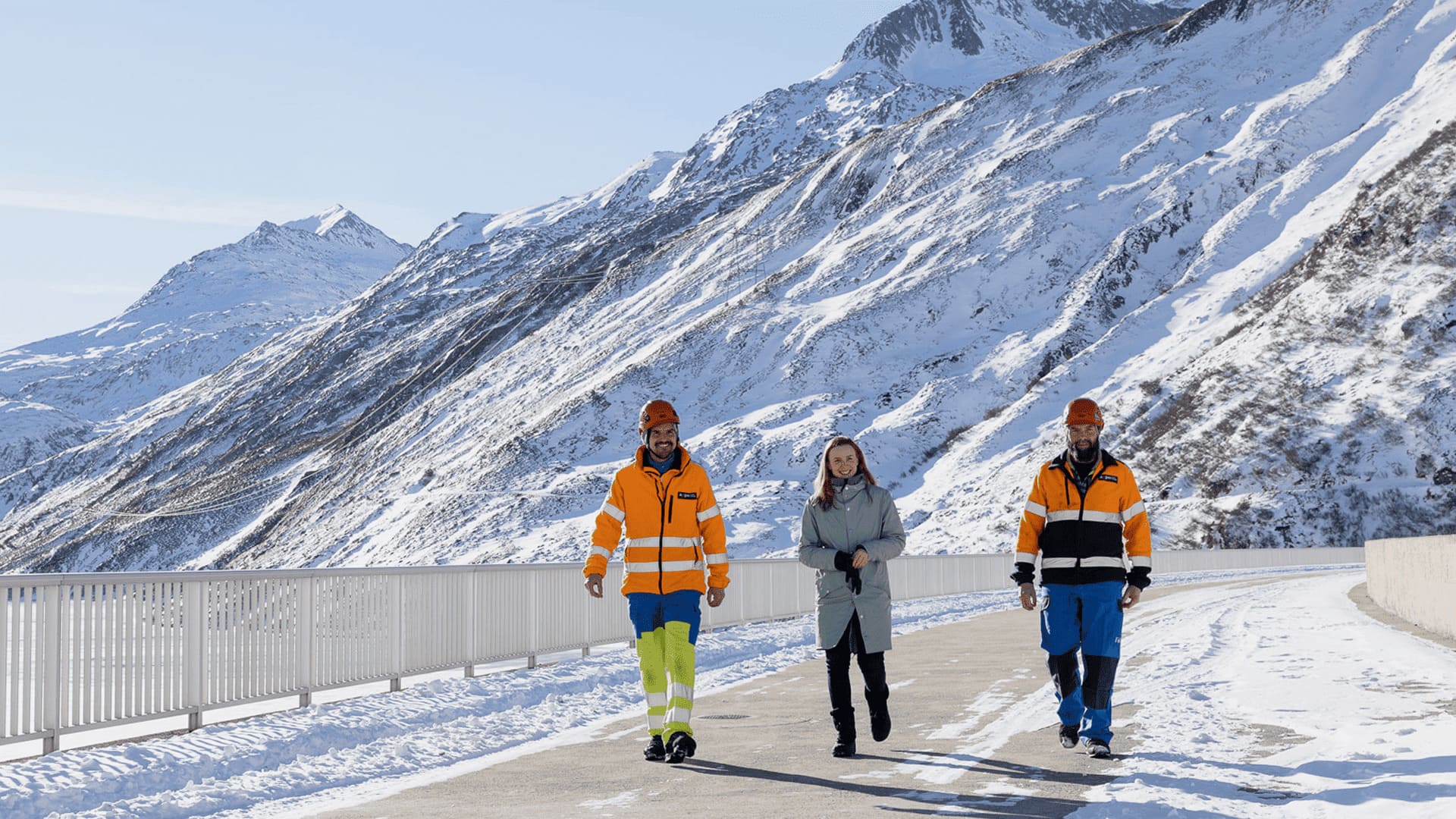
.jpg)

